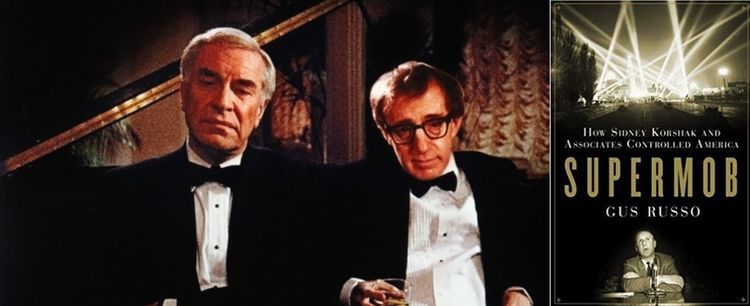


02/12/2020
Earlier by Steve Sailer: A Theory About Why Judge Bazelon Could Empathize with Criminals

Last night, I read Ron Unz’ 13,000-word review of investigative reporter Gus Russo’s 640-page exposé, Supermob: How Sidney Korshak and His Criminal Associates Became America’s Hidden Power Brokers (2006). Ron’s essay revolved around not Sidney Korshak, whom Russo called America’s most powerful lawyer, but a lesser yet very well-connected mobster named David Bazelon.
Some of you, having like me read about Judge David Bazelon, the national treasure, in the annals of Steve Sailer’s blog, where Steve called Bazelon, the longtime chief judge of the D.C. Circuit Court, the most powerful American judge not sitting on the U.S. Supreme Court, are surely asking yourselves, “I wonder if mobster David Bazelon and Judge David Bazelon were related?”
Sorta/kinda.
Let’s see. Whereas David Bazelon, the moral giant who served for a generation as the chief judge of the United States Court of Appeals for the District of Columbia Circuit, was born in Superior, Wisconsin, on September 3, 1909, and died in our nation’s capital on February 19, 1993, David Bazelon the gangster, was born in Superior, Wisconsin, on September 3, 1909, and died in our nation’s capital… on February 19, 1993?!
(Supermob had a familiar ring, because I’d bought it on May 11, 2019, and was even able to find where The Boss had hidden it. It’s a real page-turner: Its stars include MCA’s Lew Wasserman, Sam Giancana, Bugsy, er, Ben Siegel, Harry Cohn, Sammy Davis Jr., Sinatra and George Raft, while a lot of players you’ve surely never heard of play cameo roles, often as named informants.)
The gangster/judge Bazelon — talk about movie material! — one of those sanctimonious jurists you love to hate, was a “libertarian,” i.e., the black cut-throat’s best friend. His granddaughter, Emily Bazelon, carries on the family tradition, as a fake crime-and-courts journalist at The New York Times.
Sergio Leone was an erratic director, but I see now that in his epic, ultraviolent bomb about Lower East Side-born Jewish gangsters, Once Upon a Time in America (1984), based on the supposedly autobiographical novel by Jewish gangster Herschel Goldberg, aka Harry Grey, Leone understood that aspect of American history much better than I gave him credit for.

Ron Unz’ long, juicy title does not disappoint: “The Power of Organized Crime: How a Young Syndicate Lawyer from Chicago Earned a Fortune Looting the Property of the Japanese-Americans, then Lived Happily Ever After as America’s Most Respected Civil Libertarian Federal Appellate Court Judge.”
The last good movie I saw by Woody Allen was all about this mope’s world. Crimes and Misdemeanors (1989) starred Martin Landau as a pillar of the Jewish Manhattan bourgeoisie. Landau is an ophthalmologist, if memory serves, who gives lots of money to all the right Jewish charities, and is known for his elevated morality. Well, there is the matter of his mistress, but nobody’s perfect. And there’s the matter of his murdering said mistress, when she threatens to blow the whistle on him to his wife, but as I said…
A solution beckons: The Landau character’s despised brother (Jerry Ohrbach) is a low-level criminal, who “disappears” the mistress’ corpse.
Allen’s character is an impoverished, unsuccessful, impolitic documentarian and social critic, a world about which I wouldn’t know anything.
To make such a movie took not only moxie, but a great deal of knowledge, on Allen’s part. He was tearing the cover off of an entire, evil subculture. At the time, while I read numerous high-toned reviews praising C&M in the New York City press, however, I saw no references to what this picture now appears to have been about. Instead, the critics come and see, speaking of Dostoevsky. As I wrote in 2006 on my own blog:
“Maybe we ought to make jurists wear see-through robes. There’s something about the combination of wearing a black robe, sitting high above the rest of us, and being addressed as an institution (“the court”), that tends to go to judge’s heads.
“One must always keep in mind, when talking about judges, that they are a class dominated by the grimiest political hacks, most of whom owe their positions to party machines and backroom deals, even as they hold forth about “the (political) independence of the judiciary.” They couch the most corrupt and politically partisan decisions in the language of moralistic sanctimony, as if they were speaking from Mount Olympus, rather than from the sewer.”